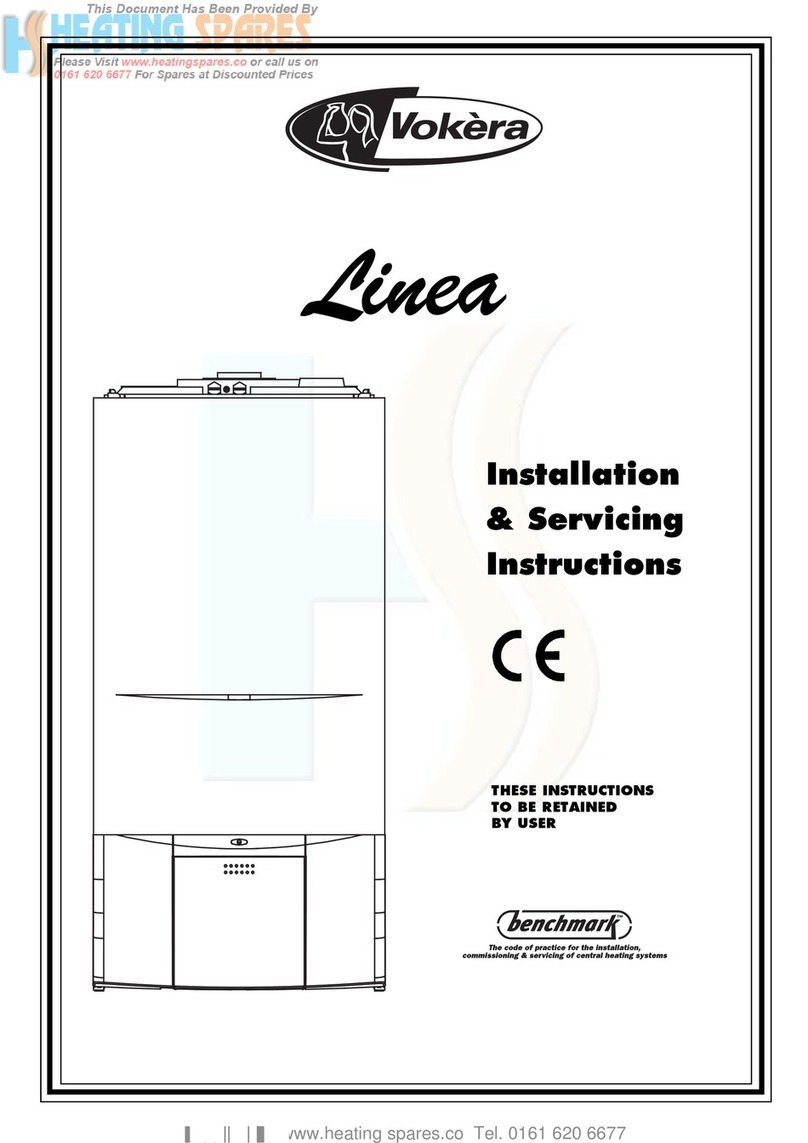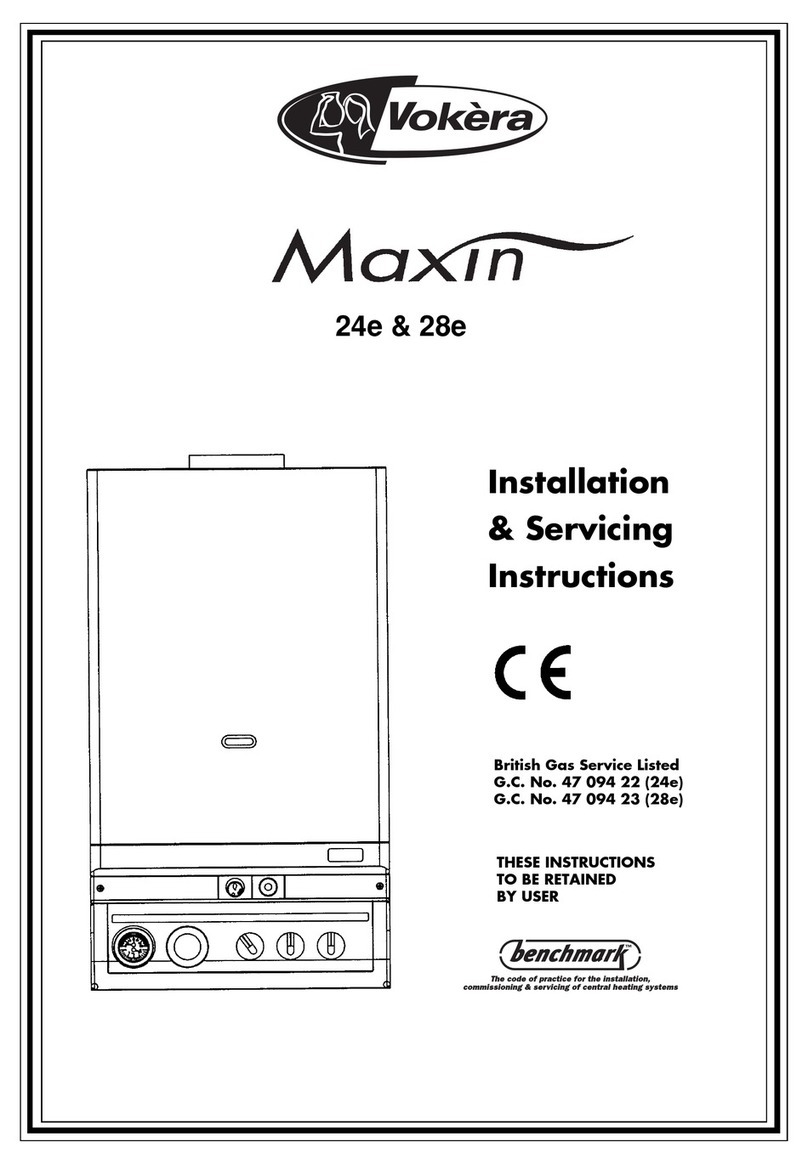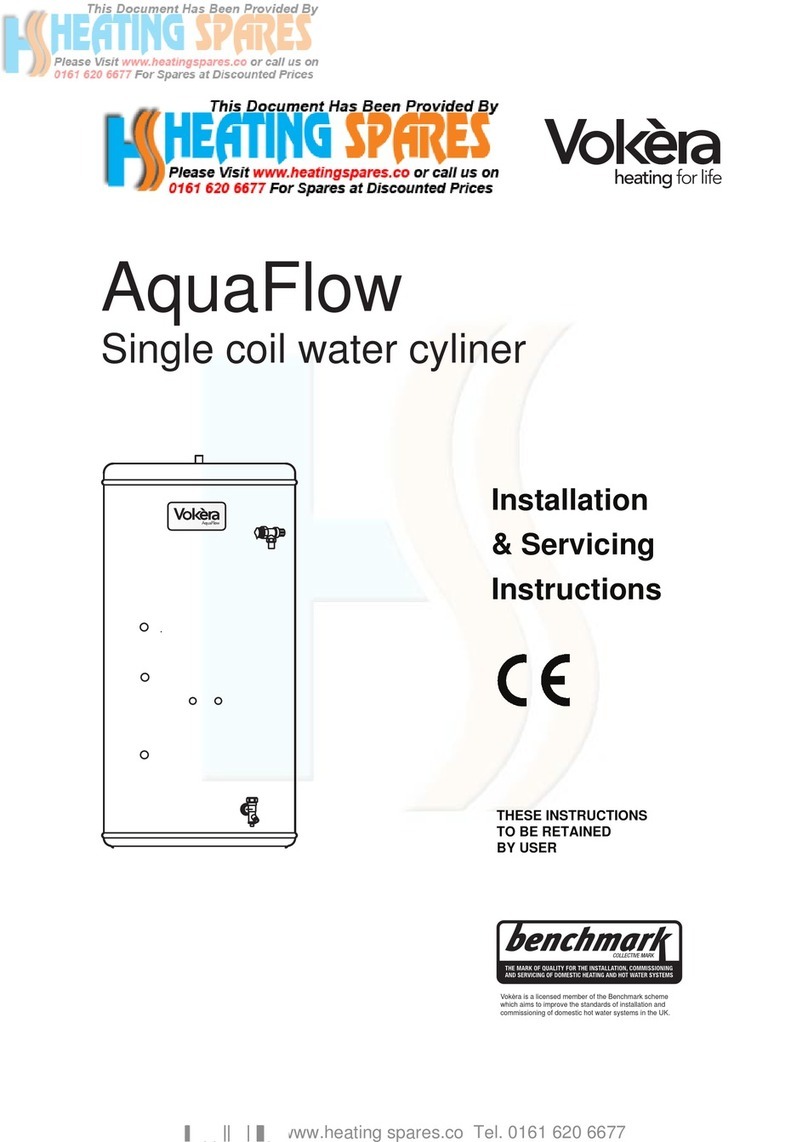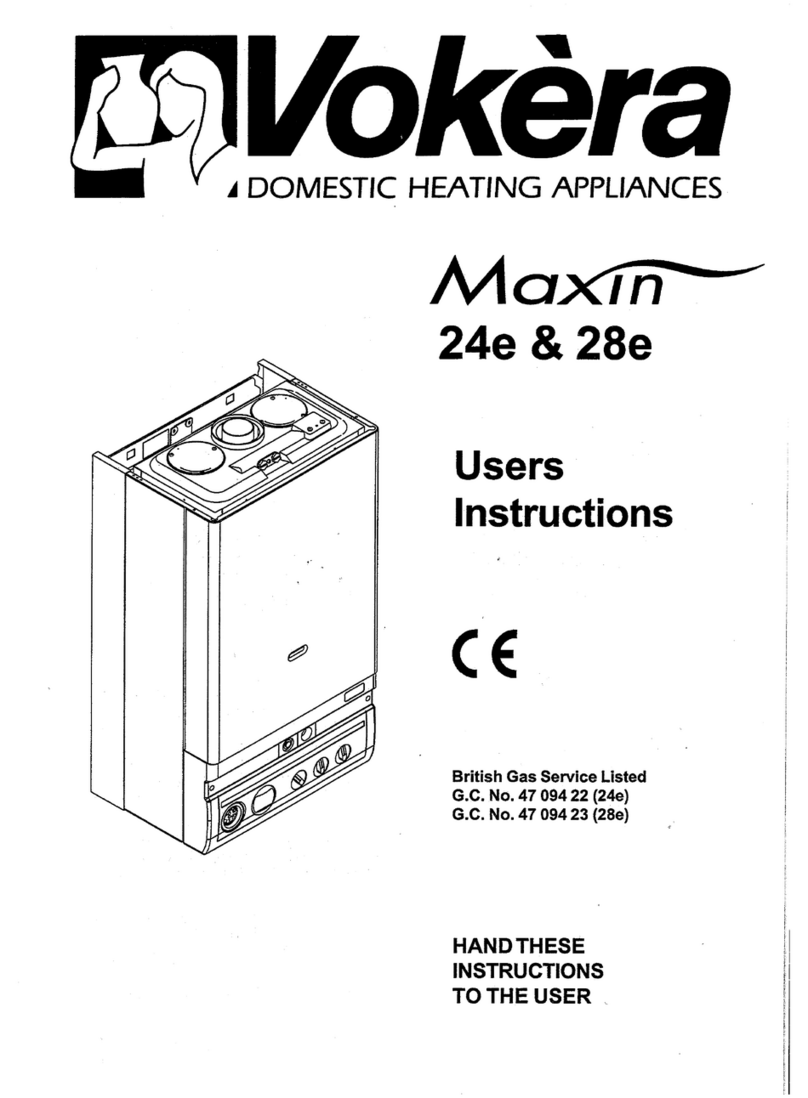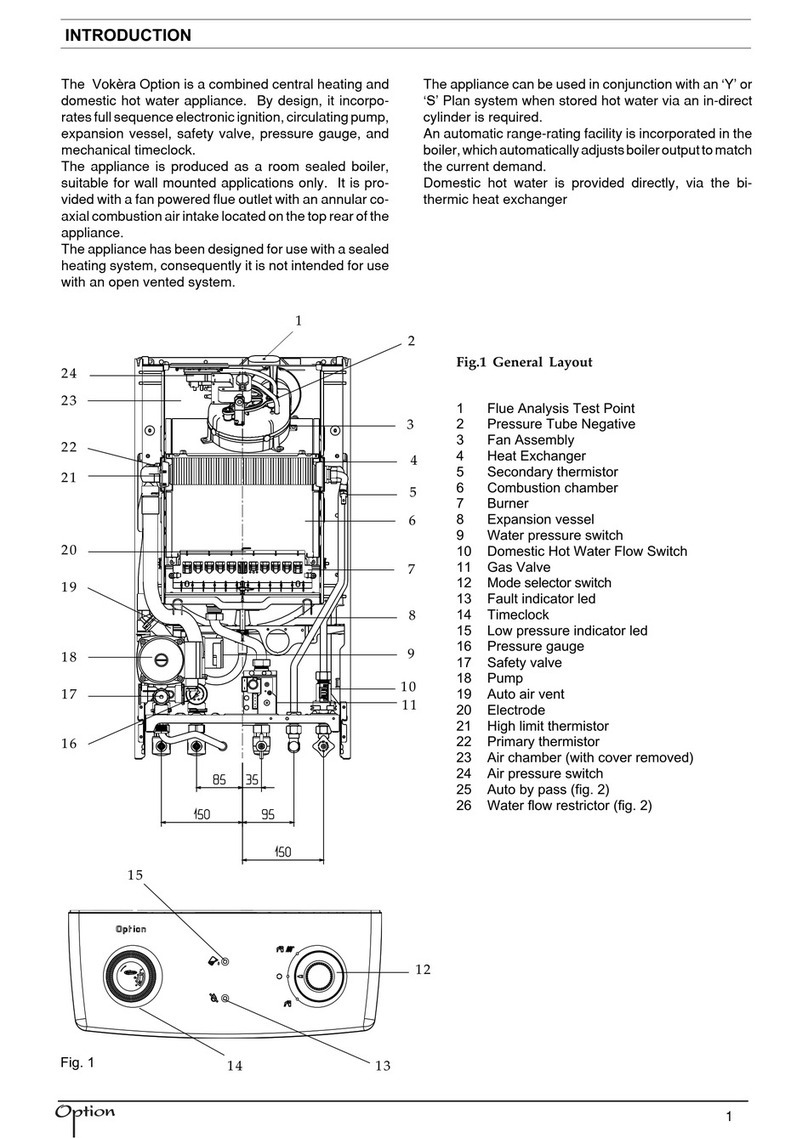8Compact
3A.5 AIR SUPPLY
The following notes are intended for general
guidance only. This appliance is a room-sealed,
fan-flued boiler, consequently it does not require
a permanent air vent for combustion air supply.
When installed in a cupboard or compartment,
ventilation for cooling purposes is also not
required.
3A.6 WATER CIRCULATION
Specific recommendations are given in I.S. 813.
The following notes are for general guidance
only.
3A.6.1 PIPEWORK
It is recommended that copper tubing be used in
conjunction with soldered capillary joints.
Where possible pipes should have a gradient to
ensureairiscarriednaturallytoairreleasepoints
and that water flows naturally to drain cocks.
Exceptwhereprovidingusefulheat,pipesshould
beinsulatedtoavoidheatlossandinparticularto
avoidthepossibilityoffreezing.Particularattention
shouldbepaidtopipespassingthroughventilated
areas such as under floors, loft space, and void
areas.
3A.6.2 AUTOMATIC BY-PASS
The appliance has a built-in automatic by-pass,
consequently there is no requirement for an
external by-pass, however the design of the
system should be such that it prevents boiler
‘cycling’.
3A.6.3 DRAIN COCKS
Thesemust be located in accessible positions to
facilitate draining of the appliance and all water
pipes connected to the appliance.
3A.6.4 AIR RELEASE POINTS
Thesemustbepositionedatthehighestpointsin
thesystem whereair islikely tobe trapped.They
should be used to expel trapped air and allow
complete filling of the system.
3A.6.5 EXPANSION VESSEL
The appliance has an integral expansion vessel
to accommodate the increased volume of water
when the system is heated. It can accept up to 8
litres of expansion from within the system,
generally this is sufficient, however if the system
has an unusually high water content, it may be
necessary to provide additional expansion
capacity (see section 6.19).
3A.6.6 FILLING POINT
A method for initial filling of the system and
replacing water lost during servicing etc. has
beenprovided.Youshouldensurethismethodof
filling complies with the local water authority
regulations.
3A.6.7 LOW PRESSURE SEALED SYSTEM
An alternative method of filling the system would
be from an independent make-up vessel or tank
mounted in a position at least 1 metre above the
highest point in the system and at least 5 metres
above the boiler (fig. 5).
The cold feed from the make-up vessel or tank
must be fitted with an approved non-return valve
and stopcock for isolation purposes. The feed
pipe should be connected to the return pipe as
close to the boiler as possible.
3A.6.8 FREQUENT FILLING
Frequent filling or venting of the system may be
indicative of a leak. Care should be taken during
the installation of the appliance to ensure all
aspectsofthesystemarecapableofwithstanding
pressures up to at least 3 bar.
3A.7 ELECTRICAL SUPPLY
The appliance is supplied for operation on 230V
@ 50Hz electrical supply; it must be protected
with a 3-amp fuse. The method of connection to
the mains electricity supply must allow for
completeisolationfromthesupply.Thepreferred
method is by using a double-pole switch with a
contact separation of at least 3 mm. The switch
must only supply the appliance and its
corresponding controls, i.e. time clock, room
thermostat, etc.
3A.8 SHOWERS
Iftheapplianceisintendedforusewithashower,
the shower must be thermostatically controlled
andbesuitablefor usewithacombinationboiler.
3A.9 MOUNTING ON A COMBUSTIBLE SURFACE
If the appliance is to be fitted on a wall of
combustiblematerial,asheetoffireproofmaterial
must protect the wall.
3A.10 TIMBER FRAMED BUILDINGS
If the appliance is to be fitted in a timber framed
building,itshouldbefittedinaccordancewithI.S.
813 and local Building Regulations.
The Institute of Gas Engineers publication (IGE/
UP/7)‘GuideforGasInstallationsinTimberFrame
Buildings’ gives specific advice on this type of
installation.
3A.11 INHIBITORS
Vokera recommend that a neutral inhibitor is
used to protect the heating system from the
effectsofcorrosionand/orelectrolyticaction.The
inhibitormustbeadministeredinstrictaccordance
with the manufacturers* instructions.
*Fernox and Sentinel manufacture products that
have proved suitable for use with Vokera
appliances. Vokera Ltd. cannot comment on the
suitability of any other such product with our
appliances.
3A.12 DECLARATION OF CONFORMITY
A Declaration of Conformity (as defined in I.S.
813) must be provided on completion of the
installation.
A copy of the declaration must be given to the
responsiblepersonandalsotothegassupplierif
required.

